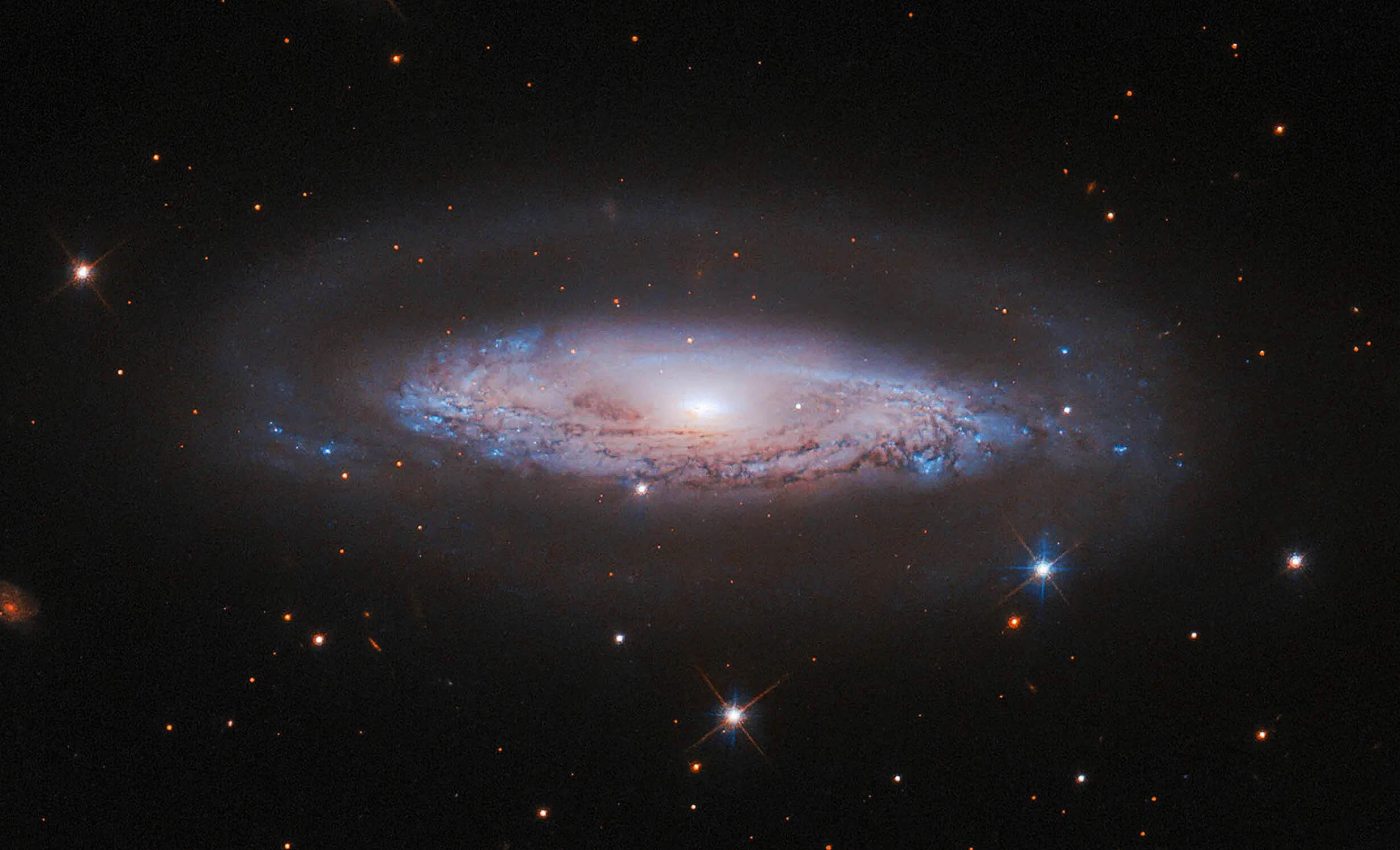
Hubble reveals the supermassive black hole powering IC 4709
The universe is filled with secrets waiting to be unveiled. IC 4709, a spiral galaxy approximately 240 million light-years away in the southern constellation Telescopium, is one such cosmic mystery.
The Hubble Space Telescope has revealed its stunning composition, featuring a faint halo and a swirling disk of stars and dust bands.
But what truly sets IC 4709 apart is its bustling active galactic nucleus (AGN), powered by a supermassive black hole.
The hidden giant of IC 4709
Contrary to expectations, the core of IC 4709 isn’t merely a congregation of stars. Its unparalleled brightness is rather courtesy of a gargantuan black hole, impressively 65 million times more massive than our Sun.
A spectacle occurs as a disk of gas spirals towards this colossal black hole, heating up due to intense collisions.
The disk eventually reaching such immense temperatures that it emits a vast spectrum of electromagnetic radiation. This spectrum extends from infrared to visible, ultraviolet light, and as far as X-rays.
Interactions between the galaxy and its nucleus
In the midst of the galaxy, a lane of dark dust is barely visible. This dust lane works as a barrier, blocking any visible light emission from the active galactic nucleus and obscuring it from view.
Fortunately, thanks to Hubble’s spectacular resolution, astronomers are able to observe the interaction between the active galactic nucleus and its host galaxy.
This ability is instrumental in the study of supermassive black holes in more distant galaxies, where such fine details are challenging to discern.
A multi-telescope approach
Further enhancing our comprehension of IC 4709 is a combination of data from two Hubble surveys of nearby AGNs, initially identified by NASA’s Swift telescope.
The Swift telescope, which houses multiwavelength telescopes, plays a critical role in collecting data in visible, ultraviolet, X-ray, and gamma-ray light. In particular, its X-ray component will enable Swift to see the X-rays from IC 4709’s AGN breaking through the obscuring dust.
Meanwhile, ESA’s Euclid telescope is currently surveying the dark universe in optical and infrared light and will also image IC 4709 and other local AGNs.
The data collated from these telescopes, alongside that from Hubble, provides astronomers with an all-encompassing view across the electromagnetic spectrum.
This comprehensive view is crucial for improving our understanding of black holes and the significant influence they have on their host galaxies.
The role of black holes in galaxy evolution
Understanding supermassive black holes, such as the one at the core of IC 4709, is pivotal for unraveling the intricate relationship between these colossal entities and their host galaxies.
Observational evidence suggests that as galaxies form and evolve over cosmic time, supermassive black holes grow in tandem, influencing their surroundings through processes like the outflows they generate.
Such interactions can regulate star formation rates, ultimately sculpting the evolutionary path of the galaxy.
Recent studies also indicate that the mass of a supermassive black hole is closely linked to the properties of its host galaxy, particularly its bulge mass. This correlation, often referred to as the M-sigma relation, indicates that more massive black holes reside in galaxies with more substantial bulges.
This intriguing relationship invites scholars to consider whether black holes act as catalysts in the formation and evolution of galaxies, suggesting a symbiotic existence that shapes the very fabric of our universe.
The next frontier in cosmic research
As technology progresses, new telescopes and observational techniques hold promise for advancing our understanding of IC 4709 and galaxies like it.
Next-generation observatories, such as the James Webb Space Telescope, will refine our capabilities to study cosmic phenomena across various wavelengths, including infrared light, which is pivotal for observing the dust-enshrouded regions surrounding active galactic nuclei.
The wealth of data generated by these initiatives will undoubtedly amplify our knowledge, paving the way for discoveries that could potentially redefine our comprehension of the universe.
Collaborative international research efforts are also essential. By pooling resources and expertise, astronomers can undertake ambitious studies that explore the interplay between supermassive black holes and their host galaxies on a cosmic scale, ultimately illuminating the mysteries that lie hidden in the depths of space.
Image Credit: ESA/Hubble & NASA, M. Koss, A, Barth
—–
Like what you read? Subscribe to our newsletter for engaging articles, exclusive content, and the latest updates.
Check us out on EarthSnap, a free app brought to you by Eric Ralls and Earth.com.
—–













